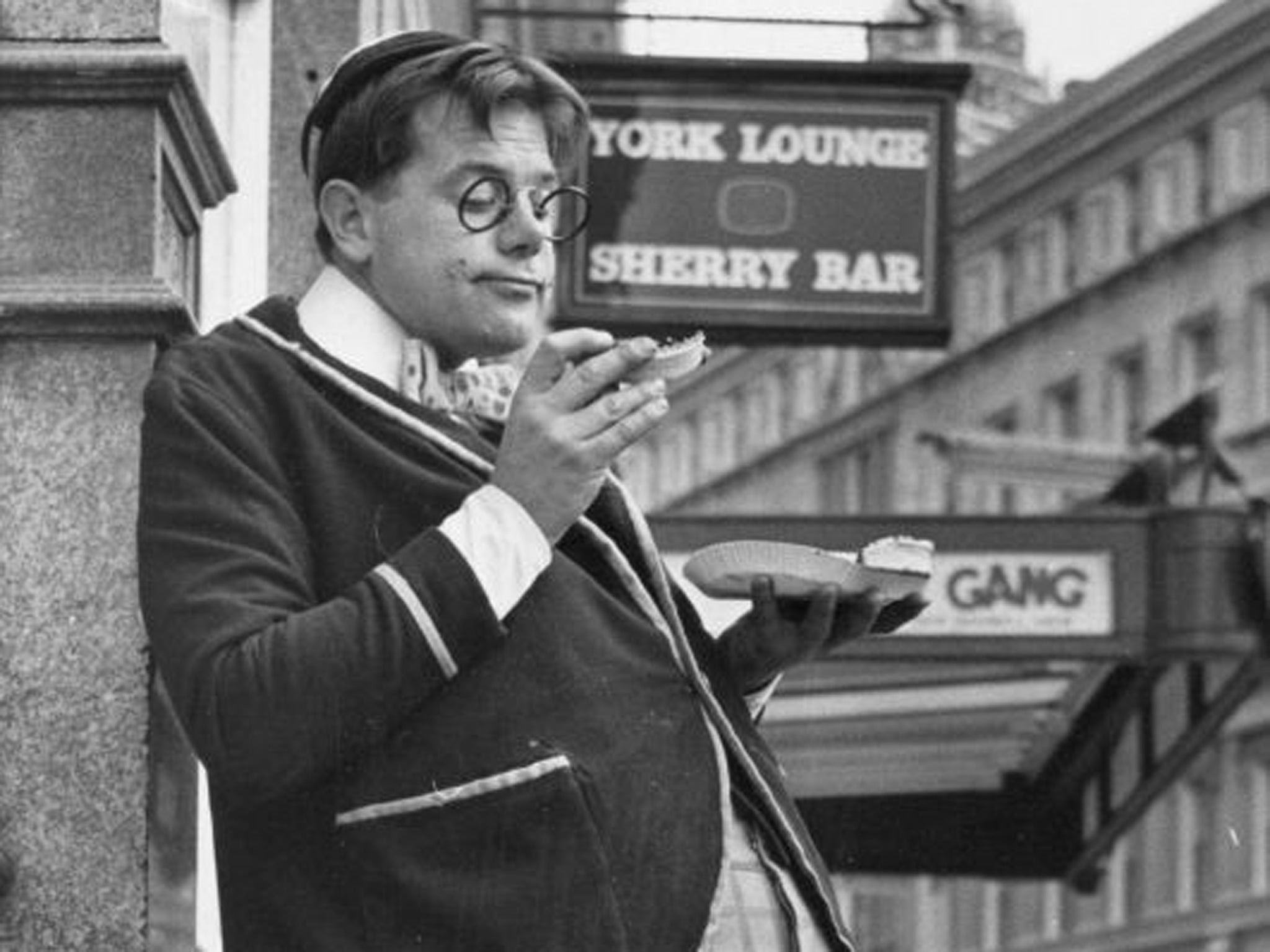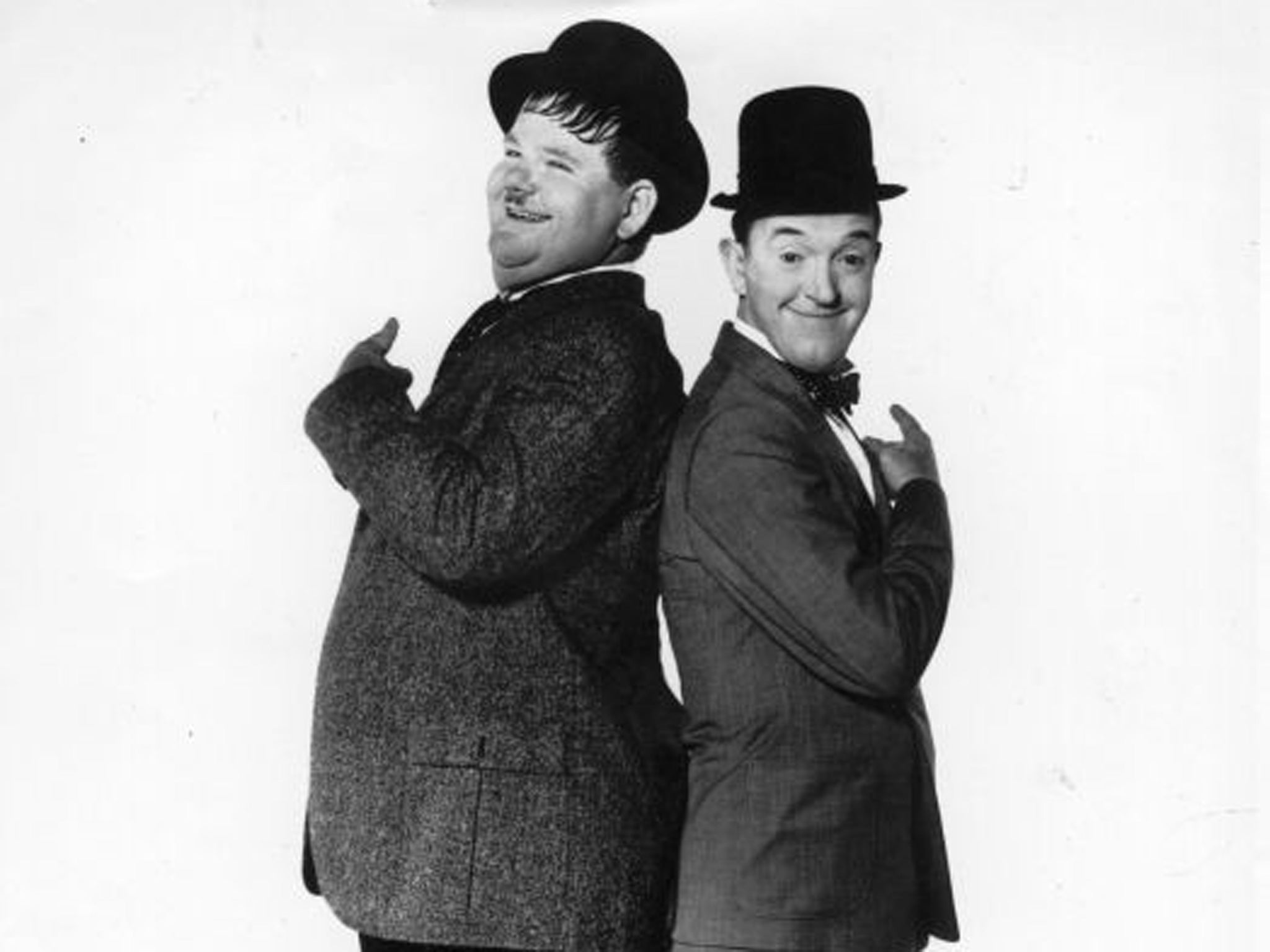The changing shape of fat as a cultural signifier - we’re all Billy Bunter now
‘Tubby’ used to be a comedy stalwart. But now that a quarter of the world’s population is obese, society will have to adjust its view of fat people

Your support helps us to tell the story
From reproductive rights to climate change to Big Tech, The Independent is on the ground when the story is developing. Whether it's investigating the financials of Elon Musk's pro-Trump PAC or producing our latest documentary, 'The A Word', which shines a light on the American women fighting for reproductive rights, we know how important it is to parse out the facts from the messaging.
At such a critical moment in US history, we need reporters on the ground. Your donation allows us to keep sending journalists to speak to both sides of the story.
The Independent is trusted by Americans across the entire political spectrum. And unlike many other quality news outlets, we choose not to lock Americans out of our reporting and analysis with paywalls. We believe quality journalism should be available to everyone, paid for by those who can afford it.
Your support makes all the difference.The obesity statistics come round as regularly as the Victorian muffin man, but last week’s updates, courtesy of the World Health Organisation (WHO) were some of the most alarming ever. According to the WHO, 2.1 billion people – well over a quarter of the world’s population – are now overweight or obese, a figure that has risen from the 1.4 billion identified in 2008. The United Kingdom, 25 per cent of whose adults are now cramming themselves into garments designed for the fuller figure, has apparently enjoyed the highest 30-year increase in obesity prevalence in Western Europe. Worse, the specimen fat person in Great Britain is likely to be not the beery middle-aged man with the rolling gait so beloved of a bygone generation of comic postcard artists but a woman in her late teens.
Eye-catching as this data is, its implications are perhaps more startling still, for large-scale physical transformations of this kind happen only very rarely. If “the fat man in history”, to borrow the title of one of Peter Carey’s early stories, was previously a fairly unusual phenomenon, mostly because large parts of the population lived in conditions of near-starvation, then the consequences of a world in which a majority of people are overweight will be felt far beyond the obvious areas of healthcare and economics. Which is to say that a fat planet will certainly be one in which millions of people die from wholly preventable diseases, and where countless extra acres will have to be set aside for agriculture. It will also be a place in which, no doubt incrementally and with trend-bucking local variations, fat as a cultural signifier and fat as an artistic symbol will come to occupy radically different places in the public imagination.
Naturally enough, the root cause of this change will be sheer ubiquity. In retrospect, one of the remarkable things about my childhood, back in the late 1960s and early 1970s, was how very few fat people there were. Each school classroom tended to contain a single fat boy or girl, invariably known as “fatty”, sympathised with if the trouble had been diagnosed as “glandular”, laughed at if the expanding waistline was reckoned to stem from over-indulgence. And here instantly looms into view another behavioural given from 40 years ago, the idea that fat people, like foreigners, mothers-in-law and honeymooning couples, were ipso facto funny. Cyril Connolly once declared that inside every fat man there was a thin man screaming to get out: music hall and television reflected this dualism by way of the classic comedy double act, in which a fat man (Oliver Hardy) fought a thin man (Stan Laurel) for supremacy.
All this led to a range of assumptions about what it felt like to be fat and the kind of metaphorical figure that the fat man or woman cuts in the environment through which he or she labours. George Orwell’s novel Coming Up for Air (1939), for example, features an overweight hero named George Bowling, who thinks it the most natural thing in the world for a fellow passenger in his railway carriage to solicit a light with the words “Got a match, Tubby?”. Bowling notes that, “merely because you happen to be a little bit fat, almost anyone, even a total stranger, will take it for granted to give you a nickname that’s an insulting comment on your personal appearance”. On the other hand, Bowling has his own conception of what it means to be fat and some of the distinct advantages that lie to hand: “One thing about a fat man is that he’s always popular. There’s really no kind of company, from bookies to bishops, where a fat man doesn’t fit in and feel at home.”

As for women, Bowling muses, fat men have more luck with them than people seem to think. The modern reader will probably regard this as just as much a form of stereotyping as my preteen assumption that fat people are funny. But in Bowling’s (and my) defence, this denial of the fat person’s individuality – the thought that any man above 14 stone in weight is essentially the same – is abetted by several centuries’ worth of literature. What, when it comes down to it, unites twinkly-eyed, do-gooding Dickensian heroes such as Mr Pickwick and Mr Boffin? The answer is that, by and large, they are fat.
A 19th- and early 20th-century fictional character with adipose tissue to spare may be an amiable halfwit (Joseph Sedley in Vanity Fair) or a self-regarding comic turn (Billy Bunter, say), but he is very unlikely to be a straightforward villain. When H G Wells’s put-upon Mr Polly eventually finds salvation at the Potwell Inn, it is entirely foreseeable that its kindly licensee should be both female and overweight. Even more characteristic of the time is that Wells never allows her a name and merely refers to her as “the plump woman”.
Significantly, the genre in which this convention starts to slip is the novel of social protest, where obesity is generally seen as a symbol of ill-gotten gains or brute authority. No 1930s slum novel, for instance, lacks its contingent of well-lunched town councillors scarcely able to rise of their chairs without popping half a dozen waistcoat buttons. Tom Joad, recounting an episode of police brutality in Steinbeck’s The Grapes of Wrath, is careful to remind his audience how fat “cops’ asses are”. Similarly, when the Victorian-era popular song began to concern itself with social issues, the fat man stops being a music-hall version of Chesterton’s rolling English drunkard who built the rolling English road, and turns into the villain of a ballad that used to be sung at Labour Party conferences well into the 1980s – “I am the man, the very fat man, who waters the workers’ beer.”
In 2014, no Labour Party conference would dare sing a song that might be thought offensive to the calorifically challenged. Neither would any civilised person dream of addressing a complete stranger as “tubby”. As far as one can tell, most of the old school-playground nicknames thought so screamingly funny 50 years ago – even when he was Chief of the Imperial General Staff in 1940, Lord Gort VC was still known to older friends as “Fat Boy Gort” – are on the way out.
Jokes are generally aimed at minorities, and where is the joke in calling someone “fatso” in a room where three-quarters of the seats are occupied by those who are so designated? But the consequences for pictorial and literary art are likely to be even more far-reaching. “Let me have about me men that are fat,” Caesar remarks to Antony in Julius Caesar, going on to express a preference for “sleek-headed men and such as sleep a-nights” rather than “lean and hungry” Cassius, who is clearly up to no good.
But a world in which nearly all the men (and women) are fat is going to have to organise itself in very different ways.
Join our commenting forum
Join thought-provoking conversations, follow other Independent readers and see their replies
Comments